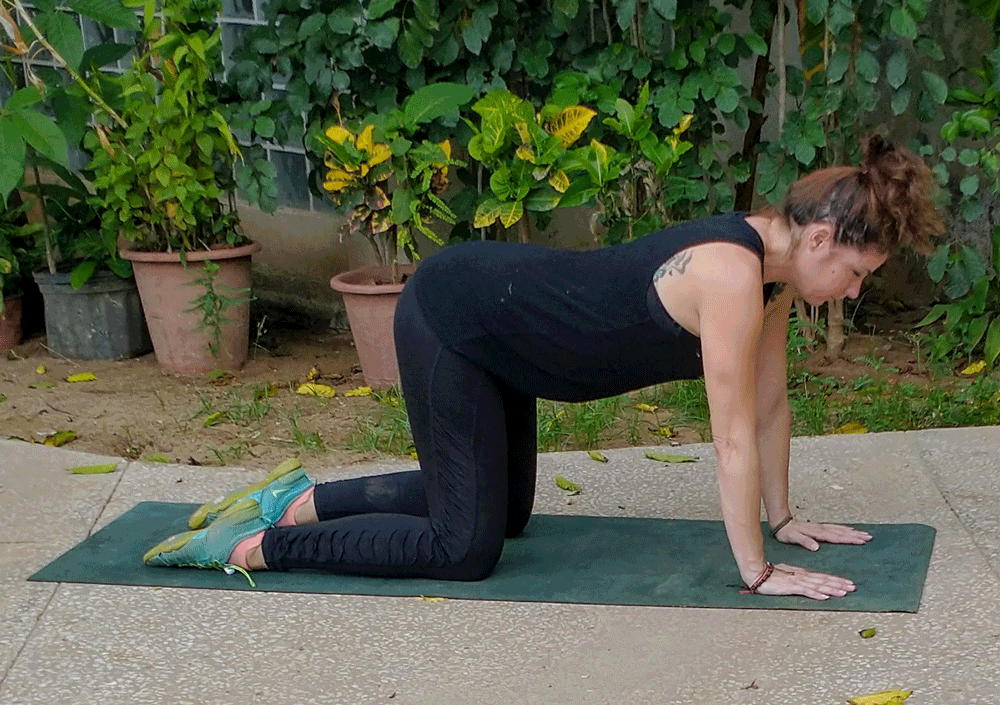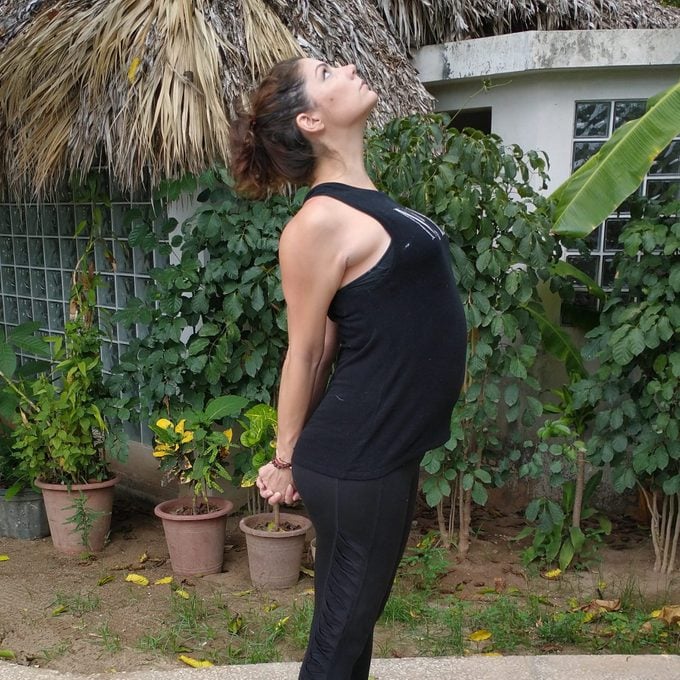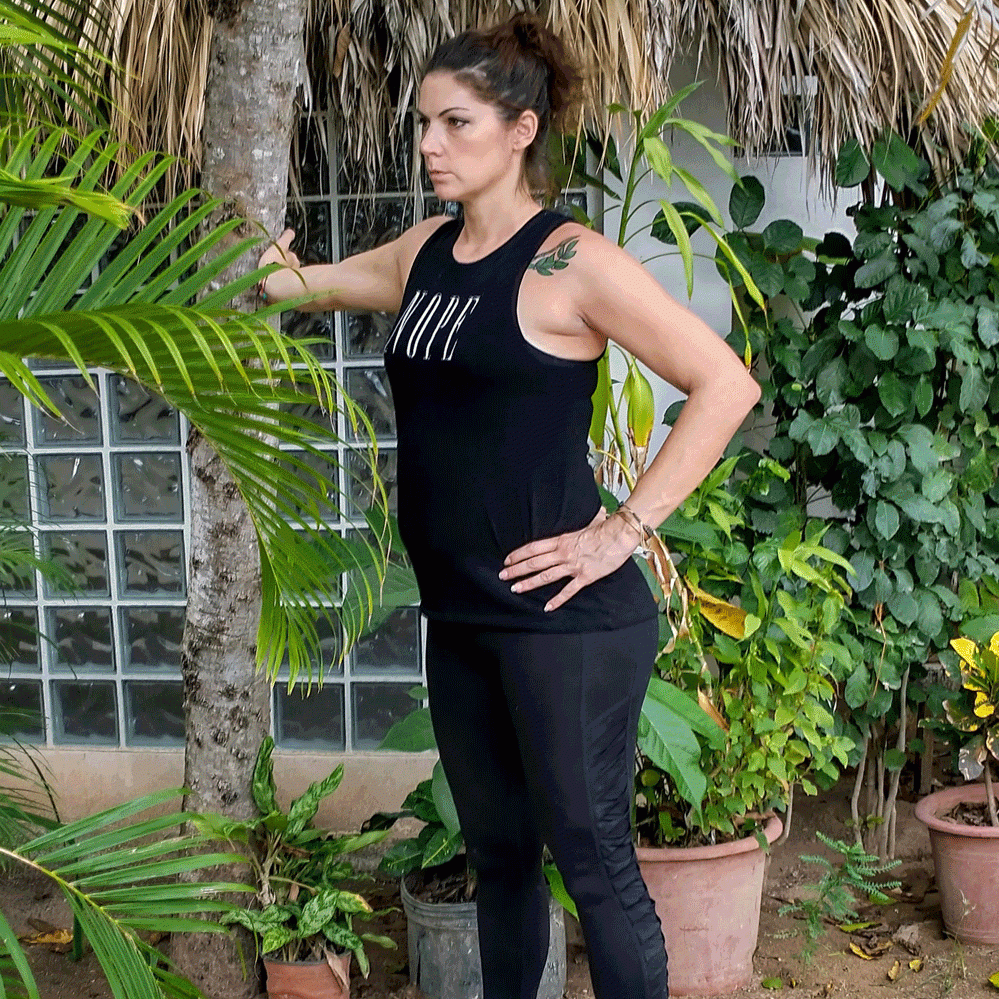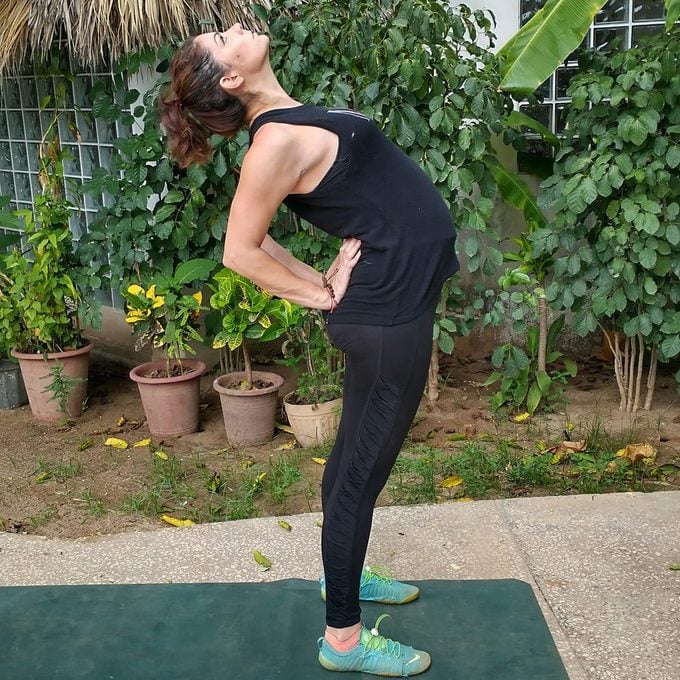4 Chest Stretches to Help Improve Posture and Reverse Slouching
Updated: Jun. 07, 2021
Slouching all day has probably made your chest muscles tight—use these daily chest stretches to help loosen things up.
The importance of stretching your chest
Take a second to think about your general body position and posture over the last 24 hours.
Did you spend a lot of time sitting at your desk, in your car, or on your couch? Even if you weren’t overtly slouched while sitting, were you looking down—maybe staring a the phone in your hand or the laptop on your legs?
And during all of this, did you allow your shoulders to roll forward and your upper back to round slightly?
If your answer to these questions is yes, chances are your chest could use a good stretch. You probably don’t even realize how tight your pecs have become.
“A lot of people have shortened and weak chest muscles from sitting all day with bad posture,” says Zhana Dmitryuk, a certified fitness instructor and the cofounder of Flexspace Studios, a boutique fitness studio that teaches stretching as a workout in Toronto, Canada. “This can lead to chronic physical dysfunction, discomfort, and pain.”
Practically speaking, Dmitryuk says, these symptoms may show up as a reduction in spinal mobility, trouble reaching forward or upward, and pain, tingling, or numbness around the shoulders and upper back. You might also experience pain radiating from your shoulders or upper back to your chest and arms.
Don’t confuse a heart attack for tight chest muscles
Chest muscle pain isn’t an immediately serious condition, but you should still see a doctor the minute you feel chest pains. That’s because the symptoms are so similar to those of a heart attack.
You don’t want to assume you’re dealing with tight muscles when you’re actually having a heart attack.
If you have even an inkling that the pain in your chest might be a heart attack, call 911 immediately, especially if you’re also experiencing shortness of breath, faintness, nausea, or excessive tiredness.
Chest pain can also be mistaken for anxiety, so learn the difference.
Easy ways to stretch out your chest
Assuming your tight chest muscles are simply the result of chronic poor posture (or pumping out way too many chest presses at the gym), it’s actually pretty easy to incorporate stretching into your daily life to ease the pain.
“There are different ways to perform a chest stretch—and they don’t have to be complicated,” says Lucile Hernandez Rodriguez, a registered yoga teacher with over 500 hours of training.
“They can relieve tightness and soreness in your chest, can be done sitting down or standing up, and ultimately, they can help you breathe better as you open up your chest and diaphragm, giving your lungs space to expand,” she says.
Consider adding the following stretches to your daily routine, as suggested by Hernandez Rodriguez and Dmitryuk.
Cat-cow series: do it when you wake up
The cat-cow series of stretches is an easy yoga pose. It’s a great way to open up your chest and shoulders while also encouraging spinal mobility as you wake up your body first thing in the morning.

How to do it
Start on your hands and knees in a tabletop position. Align your palms under your shoulders and your knees under your hips.
Take a deep breath in. As you inhale, press through your palms and expand your chest forward, lifting your head and neck to look up.
Simultaneously, press your tailbone upward, allowing your mid-back to relax toward the mat. You’ll feel a curve or dip in the spine. This is the cow pose.
On your next exhale, reverse the movement: arch your upper and mid-back upward while tucking your tailbone under. As you move, relax your head and neck between your arms. This is the cat pose.
Continue the series for a minute, performing the cow with each inhale and the cat with each exhale.
Standing chest opener: do it at work
Because it’s so common to hunch forward while working at your desk, the standing chest opener is an easy way to counteract the slouch.
It’s best to do this at least once an hour, so set an alarm and use it as a reminder to stand up, move around a little bit, and reset your posture.

How to do it
Stand up straight with your feet planted roughly hip distance apart. Relax your shoulders and check your posture. Your ears should be “stacked” over your shoulders, hips, knees, and ankles. Reach both arms behind your back and interlace your fingers.
Take a breath in. As you exhale, draw your shoulder blades together, press down through your palms, and puff out your chest until you feel a stretch across your chest and shoulders.
Hold the position and continue to breathe deeply for 30 seconds. With each exhale, bend backward a little more to further open up the chest.
Complete two sets.
(Have a headache at work? Try these exercises for headache relief.)
Wall-assisted chest stretch: do it after an upper-body workout
If you’ve just completed an upper-body workout, taxing your pecs and shoulders, use the wall-assisted chest stretch to help loosen up those muscles while they’re still warm.
The unilateral nature of the stretch allows you to target each side of your chest independently. And by using a wall, you can deepen the stretch as needed, according to your own level of flexibility.

How to do it
Stand with your right side perpendicular to a wall and place your right palm flat against the wall, your fingers pointing behind you, your arm fully extended.
Keeping your arm straight, rotate your torso away from your extended arm until you feel a stretch at the front of your right chest and shoulder.
Hold the position for 30 seconds, breathing deeply. Release the stretch and repeat two more times before switching sides.
(Try these chest exercises you can do at home.)
Standing backbend: do it when you get up from the couch
Your desk isn’t the only place you may be inclined to slouch.
Whenever you’re at home and you stand up after sitting on the couch, use this as a reminder to perform a quick chest stretch.

How to do it
Stand tall with your feet roughly hip distance apart. Check your posture to make sure your ears are aligned with your shoulders, hips, knees, and ankles. Place your hands on your lower back.
The goal is to eventually have your fingers pointing up, but if this is too challenging, your fingers can angle upward, outward, or even downward, as needed.
Draw your shoulder blades together, opening your chest, as you try to aim your elbows straight back.
On your next inhale, lift your chest and bend backward slightly, looking up toward the ceiling.
Hold for five breaths. With each inhale, allow your chest to open and lift a little more, deepening the backbend.
Release the pose, then repeat two more times.
Next, when your upper back is aching, try these stretches for upper back pain.























